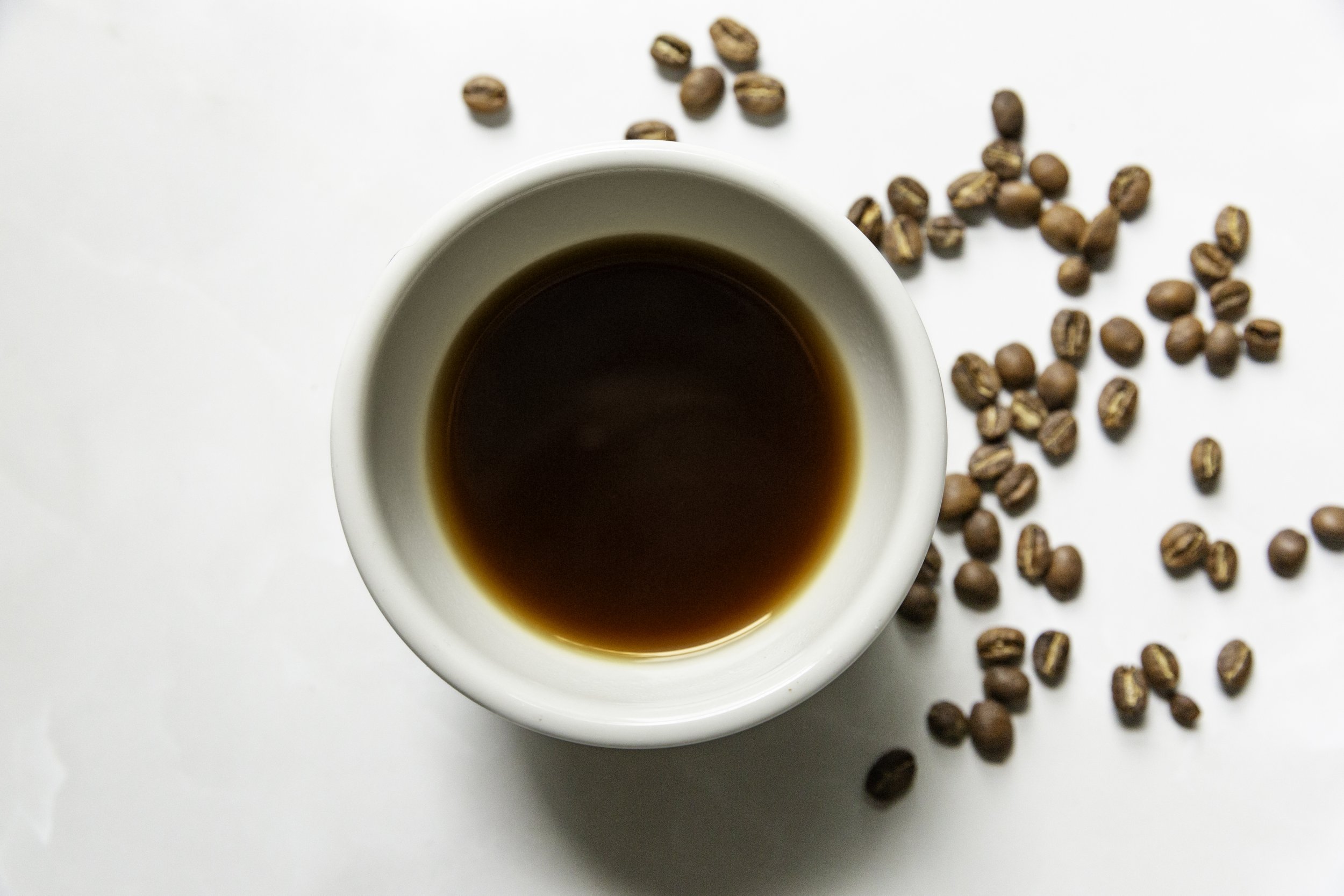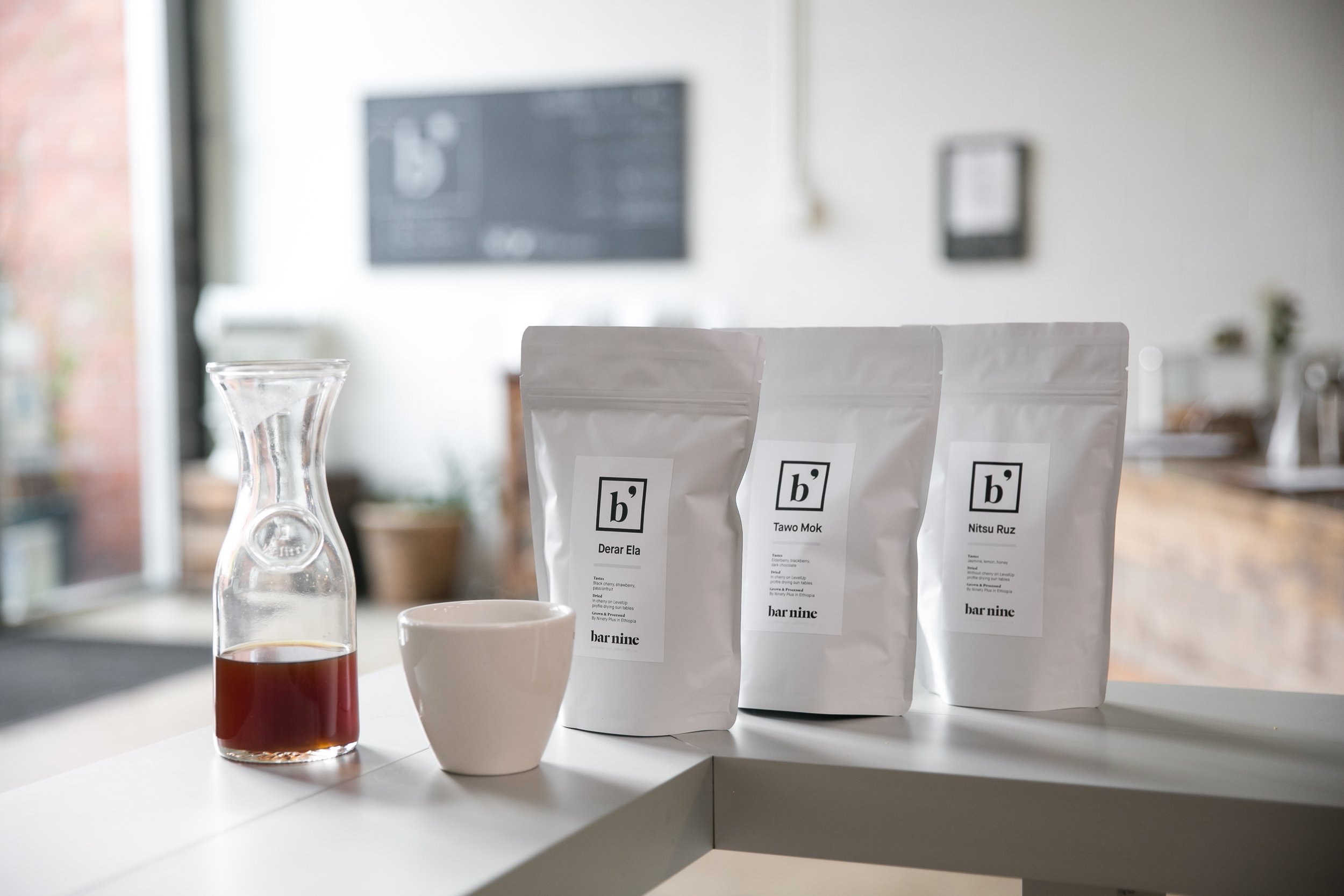Gems of Joe: An Interview with Justin Enis
Roaster Justin Enis of Enjoy Coffee Roasters discusses the future of anaerobic fermentation.
Photo: RaeAnn Serra
Roaster Justin Enis is a self-proclaimed coffee nerd. In 2015, he started his small-scale coffee project, Enjoy Coffee Roasters, as more of a hobby; a means to expand his already impressive coffee knowledge and to experiment with a multitude of coffee roasting and brewing techniques. After working in the Providence food and restaurant scene for the past 15 years, including stints at Bolt Coffee and Equal Exchange, Enis felt ready to bring his company to the next stage and share his coffees with the Providence community. By showcasing lesser-known and experimental roasts with his customers, and highlighting small-scale producers from around the world, Enis celebrates the variety and complexities that coffee can offer.
How did Enjoy Coffee Roasters start? What did you set out to do?
I wanted to create something that filled a gap in the Providence coffee scene while also seeing if I could get any momentum. Thinking of coffee in a more organic and artistic way, I just wasn’t feeling it here. I wanted to push the boundaries a bit. I started with a pop-up at Pickerel with Chef Nikhil Naiker. We were mobbed for seven hours. I was blown away and humbled. I thought, ‘how do I keep the momentum going and build my brand, while having it be sustainable with my day job?’ I thought of this monthly drop model, and now I'm on the eighth drop and each [coffee] has sold out. Through my Instagram, regional coffee events, and competing nationally in the US Coffee Championships, I was able to get some national attention, and now we have 180 subscribers nationally. This year, I wanted to try to take folks on a journey of sorts on how dynamic coffee can be, and not just in terms of origin, but in processing techniques and profiles in the cup. I'm trying to use my connections and share these gems.
What do you consider to be those “gems”? Why do you feel it's important to highlight them at Enjoy?
So, anaerobic fermentations in general are new as of the last three years. They are really hitting more of a critical mass now. Anaerobic beans can be washed or honeyed. Traditionally, the cherries are plucked and set to dry as is. You need the ideal climate for that to avoid mold. Anaerobic fermentation has a step in between: the cherries go into airtight oxygenless tanks, and that's where the anaerobic process starts and goes into hyper speed. Different enzymes and acids are produced and broken down, so they’re often more lactic, and they can quickly get funky. I think that coferments and anaerobic fermentations are slightly polarizing within the coffee industry. But the 10,000-foot view of these new techniques is important. The dynamic between buyers and growers has always been one-sided. We say, “This is what we need. Farmers, turn your lives upside down and if it turns out well then maybe we’ll buy it.” It’s not sustainable for the farmers. We’re seeing these techniques being done because they’re a potential solution to the effects of climate change. Maybe a farmer’s cherries are ripening too quickly because it's warmer, so their overall cupping score might be down a point. I think these sort of processing methods are really creative. Some farms are using them to up their quality and improve their cup score and get a higher price per pound. In some cases though, the farmers need to invest in new equipment, like stainless steel drums and new meters. There’s so much risk, but I think these processes give farmers a glimmer of hope.
roaster justin enis
Gitabi Hill, Northern Province, Rwanda, Red Bourbon, Washed
What draws you to roasting these styles of coffee? What are the benefits and challenges of working with these kinds of beans?
Being a green buyer for so many years and having so many opportunities to dip my toes in the water, I wanted to see how these styles resonated [in Providence]. I sourced a carbonic macerated coffee for the pop-up and it went insane. There hadn't even been a carbonic macerated coffee served in the state. Francois Tuyishime from Yego Coffee also gave me one of his first anaerobically processed coffees, one of the first to leave [Rwanda]. Anaerobic fermentation wasn't even allowed in Rwanda for a long time. For me, it's important to participate and create a feedback loop that gives some data to those farmers. I was excited to have the city be brought into it too, so folks in town can be introduced to [these styles]. There are challenges though. Roasting these coffees is a very different game. There’s so much more sugar on the outside of the coffee, so if you're relying on whole bean color, it can be deceptive. The way that anaerobic fermented coffees behave in their roast progression is very different, too. They tend to be very excitable late in the roast. You have to be very diligent and know when to pull back the reins. There are so many nuanced processes that can be muddled and missed.
How do you present these technically advanced coffees to the public and initiate a conversation?
Education is what I loved the most about my tenure at Bolt Coffee. We would host public cuppings and I would be the resident coffee geek. We’d do blind tastings, and brew guides and brew videos during the pandemic. I love meeting people where they’re at. I want to create an educational experience without anyone feeling intimidated or unsure. I want anyone who encounters my coffee to feel like, oh wow I want to continue to buy coffee from independent roasters and continue experiencing what I am at that moment. It’s possible for me to execute it by doing one coffee a month. I'm able to get so much detail about how that coffee came to be and have it live on the website. As they're tasting it, it can be this really intentional experience. I try to put them in that terroir as best I can if that’s where they want to go. If you want to go down the rabbit hole you can, but if not, just sit back and enjoy.







